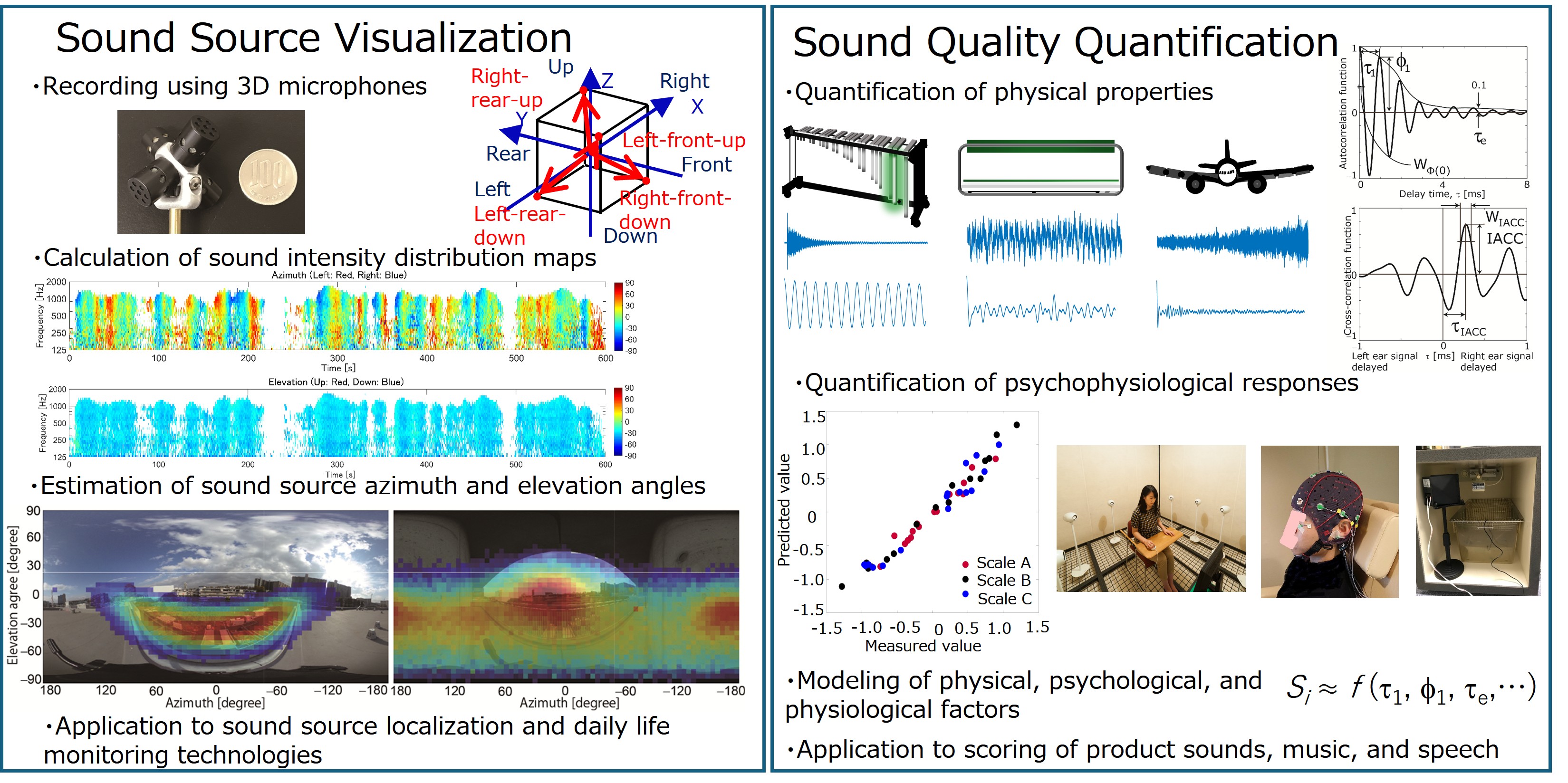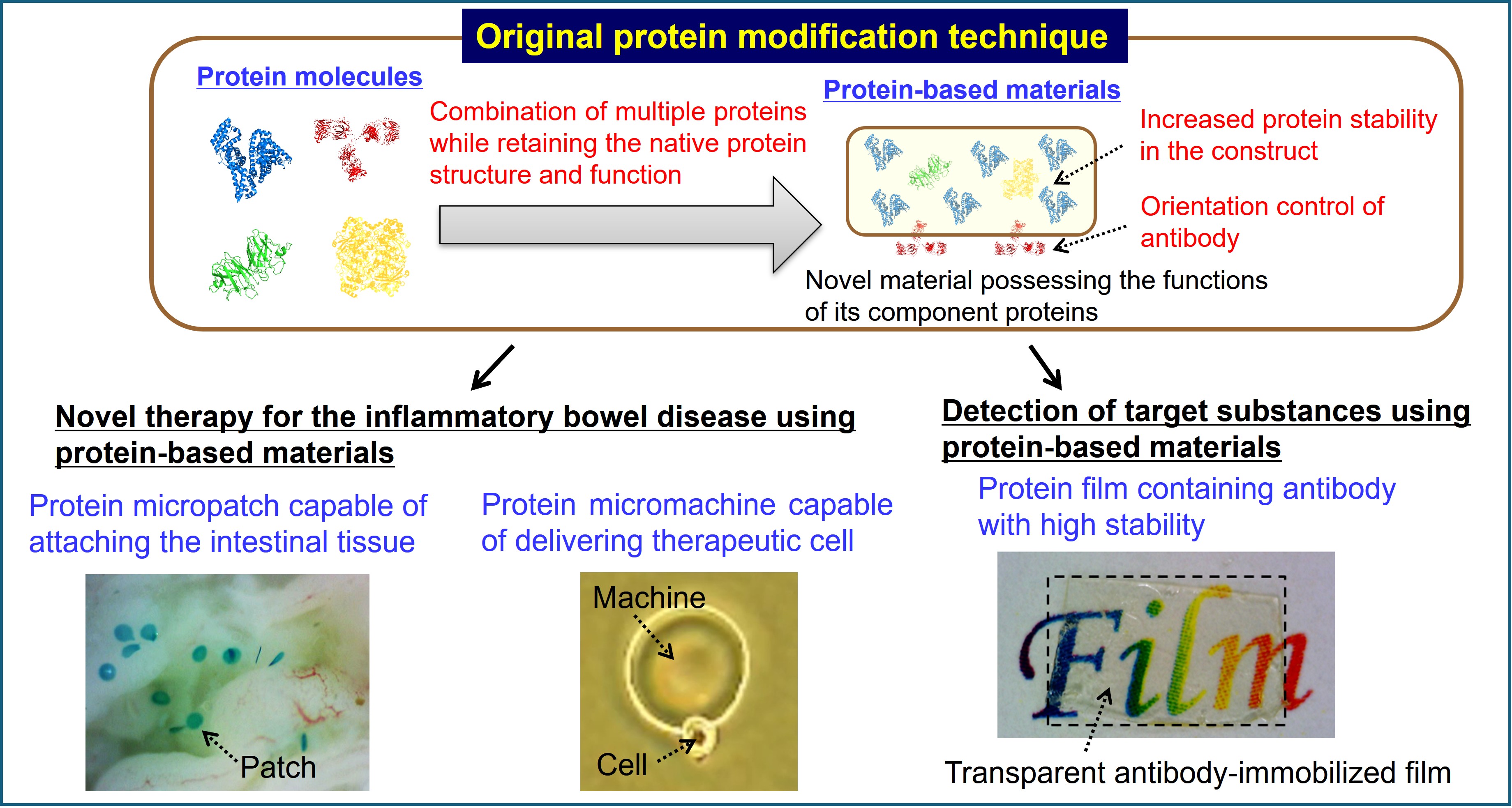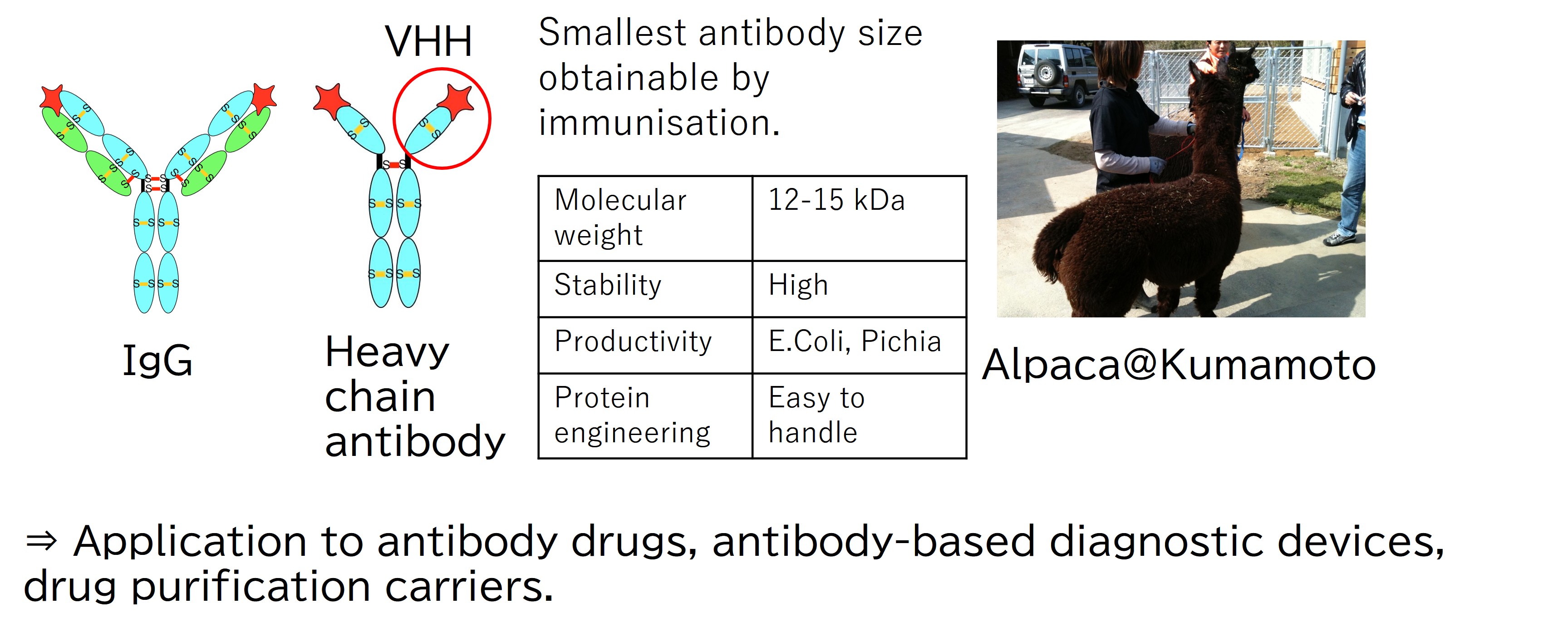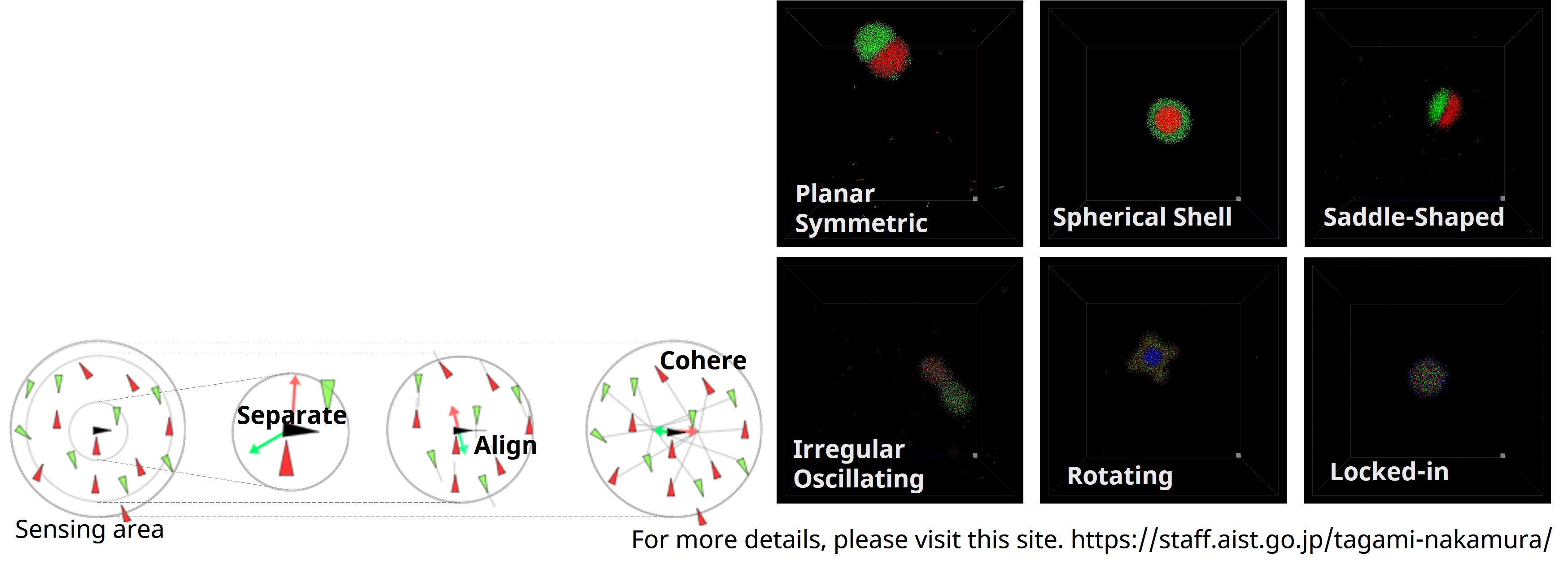Biomolecular Modality Research Group
Introduction to research
Our group develops evaluation methods for hearing and emotional responses by measuring brain function and physiological activity, and designs high-performance functional molecules using proteins. We are working on methods to assess stress responses in humans and animals to everyday auditory and other sensory stimuli. In addition, we are developing advanced technologies for antibody discovery, antibody-based functional glycans, protein-based micromachines, and simulations of group behavioral models. Our research spans a wide range of levels, from molecules to animals and humans.
1)Sound Source Visualization and Sound Quality Quantification
- Portable and cost-effective 360-degree sound source visualization
- Elucidation of auditory mechanisms involved in sound quality evaluation
- Qualitative evaluation and sound design reflecting auditory mechanisms

2)Development of liposomes optimized for antibody induction and zirconia columns for immunoglobulin purification
- Unique technology for preparation and analysis of antigen-presenting liposomes
- Efficient induction of antibodies that recognize carbohydrate or small antigens
- IgM purification/labeling technology using zirconia columns

3)Creation of highly functionalized materials using multiple proteins
- Construction of protein-based materials while maintaining the native functions of proteins
- Development of protein-based medical devices for the treatment of inflammatory bowel disease
- Development of antibody-based devices for the detection of target substances with high sensitivity

4) Development of pharmaceutical and medical materials using alpaca-derived single-domain antibodies.
- Prediction of antigen-responding VHH antibodies by tracking the evolution of antibody along the time course of immunization
- Engineered antibody design (multivalent antibodies, antibody-drug conjugates)
- Antibody-based composite technology with functional materials.

5) Application of animal group model
- Heterogeneous boid: a model of animal group movement with types of agents communicating locally. → reducing computational costs
- By adjusting interaction, it forms stable, symmetrical, and scalable patterns. → functional swarms

List of Publications
Staff:
- Yoko AKAZAWA (Research Group Leader)
- Yoshiharu SOETA
- Tetsuya OKUDA
- Mari NAKAMURA
- Hironori YAMAZOE